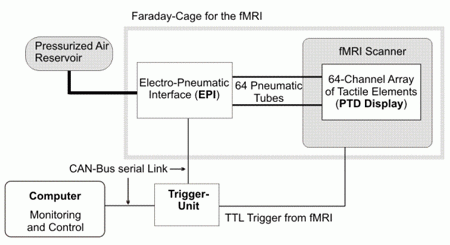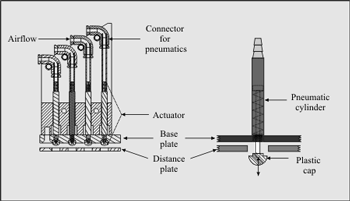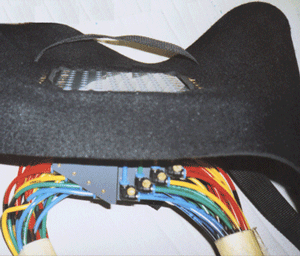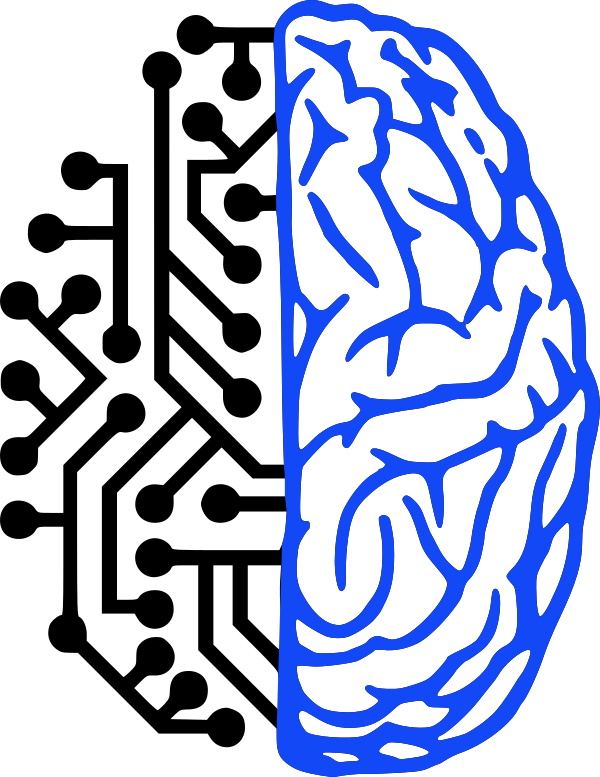The PTD establishes tactile contact with the skin by a compressed air-driven piston. Thus, only air-tubes reach into the magnet of the scanner where the non-electronic tactile display unit is located during the experiments. An electro-pneumatic interface (EPI), located several meters away from the center of the magnet, regulates the pressure timing . A trigger-unit synchronizes the timing of the display unit with the fMRI trigger. A serial bus based on a CAN -protocol connects the EPI and the trigger-unit to a control computer outside the Faraday cage. Via the control computer the stimuli can be manipulated interactively or a prepared script can be launched by the dedicated tactile vision substitution system control software (TVSSCS). The display unit requires a working pressure of 3-6 bar, which is provided by an external compressor and a reduction valve to reduce the primary pressure. The system set-up is shown schematically in Figure.

The PTD is able to generate highly reproducible tactile stimuli on a 2-dimensional matrix and can therefore be utilized for vision substitution by tactile perception, in instances where only low resolution is necessary, e.g. for edge detection or simple motion processing. It is fully automated and can be controlled by dedicated software which allows the generation of spatial and temporal complex patterns.
 Owing to its modular structure the display unit can be mounted onto most parts of the human body, e.g. abdomen, arm or foot.
Owing to its modular structure the display unit can be mounted onto most parts of the human body, e.g. abdomen, arm or foot.


Electronic Visions Group – Prof. Dr. Johannes Schemmel
Im Neuenheimer Feld 225a
69120 Heidelberg
Germany
phone: +49 6221 549849
fax: +49 6221 549839
email: schemmel(at)kip.uni-heidelberg.de
How to find us


